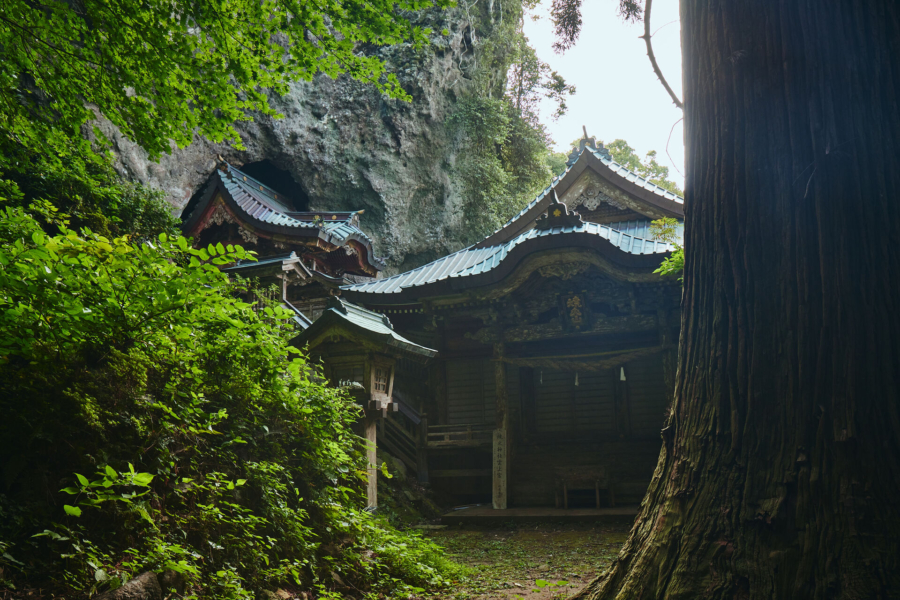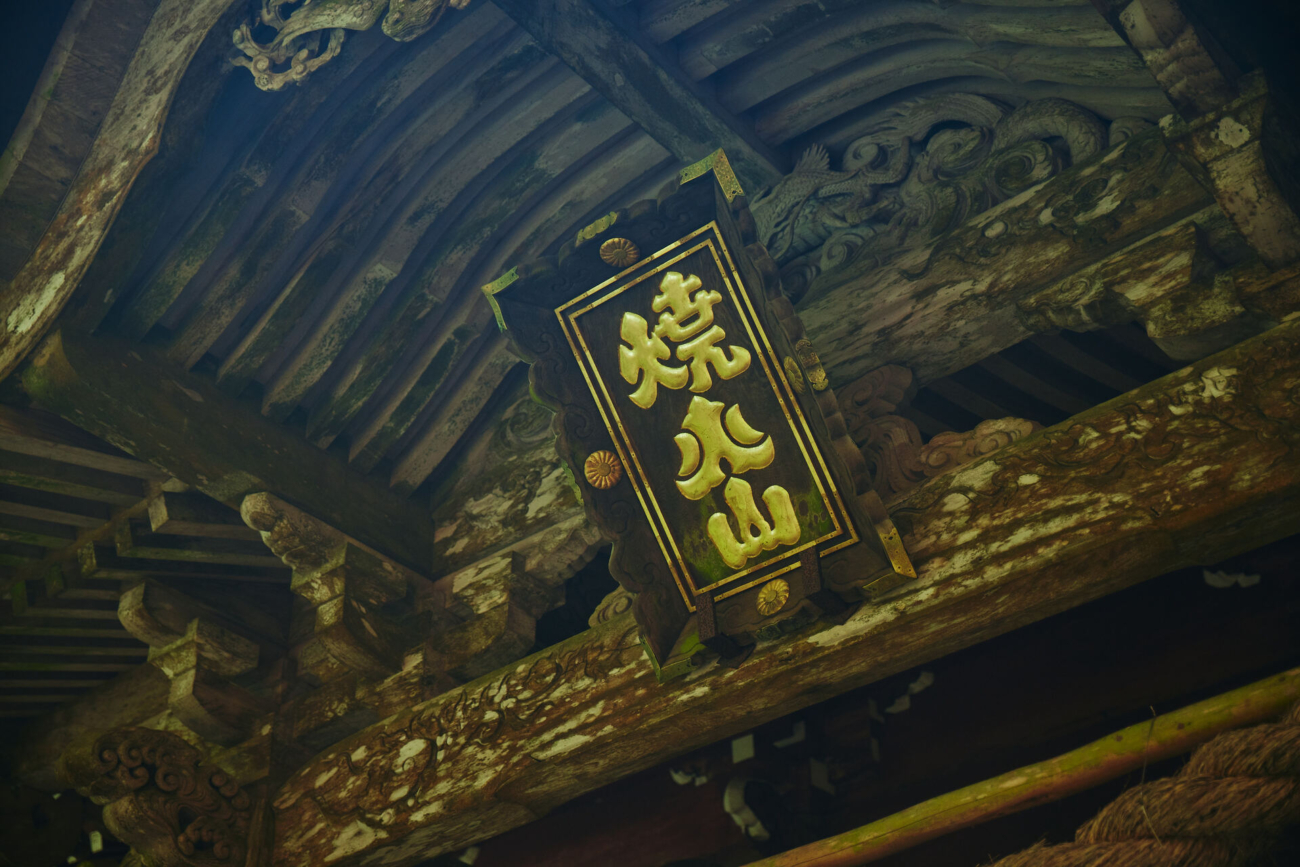Sacred Ties with the Natural World
Tamawakasu-mikoto Shrine (Okinoshima Town) honors Tamawakasu-no-mikoto, who is believed to have been one of the deities governing the Oki region. However, the shrine also holds the important status of sōja shrine, whereby all the deities in the same region are grouped and enshrined together. The sōja system was introduced to ease the burden on provincial governors, who were required to visit every shrine under their care. After the establishment of the system, governors could pay their respects to every deity in a single visit. It is thought that Tamawakasu-mikoto Shrine was originally built upon the orders of Emperor Tenmu (631-686).
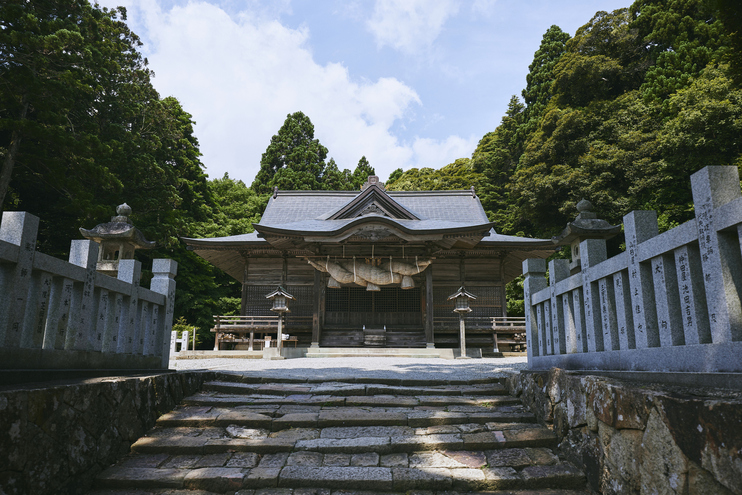
The current main shrine building dates back to 1793 and is a fine example of Oki-zukuri, a form of architecture which combines elements from several major shrines from around Japan. After looking round the shrine, visit the nearby Oki-ke Traditional Residence & Museum, the former home of the Oki family, who have been associated with the shrine for many generations.
The small museum in the building contains items of historical and cultural significance connected with the shrine. There is also a group of ancient kofun (burial mounds) in the forest just behind the shrine, which are best visited with a guide who can explain their significance.
On June 5, Tamawakasu-mikoto Shrine is the venue for the annual Goryee-furyuThis will open in a new tab. , one of the Oki Islands’ most dynamic and popular festivals. The highlight is when eight sacred horses from around Dōgo Island come galloping into the shrine and up the steps. The horses are guided by people running alongside, but no humans are riding them: Each horse is said to be carrying a deity, who gather once a year at Tamawakasu-mikoto Shrine to wish for prosperity and peace.
The magnificent Japanese cedar tree in front of Tamawakasu-mikoto Shrine is called Yao-sugi (eight-hundred-year-old tree). The name comes from Yaobikuni, a legendary nun who was said to have achieved immortality after eating the flesh of a mermaid. She went on to plant trees all over Japan, including Yao-sugi. The tree is estimated to be more than 1700 years old and is now supported by posts because the inside has hollowed out over time. Yao-sugi is one of the Four Great Cedars of Dōgo Island. Two more of these splendid Japanese cedars stand deep in the forest on Mt. Daimanji (the highest mountain in the Oki Islands at 608 meters).
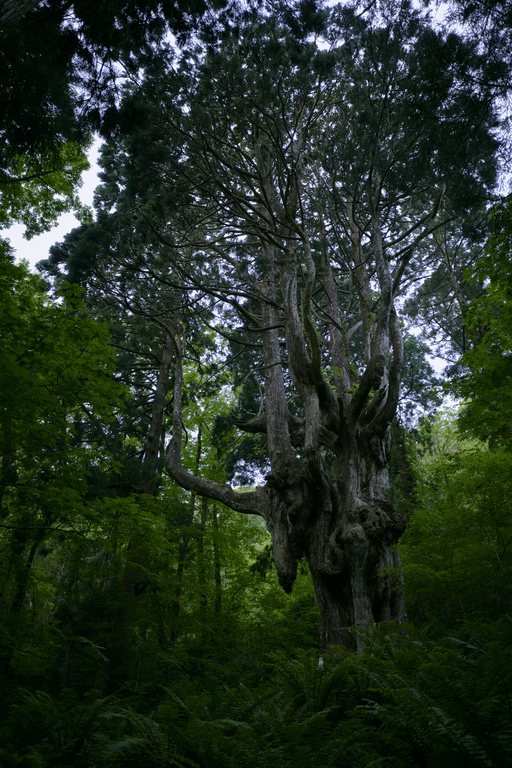
Chichi-sugi stands behind a torii (gate), but there are no shrine buildings—the tree itself is considered sacred. This tree is around 800 years old and has more than 20 large dangling roots, giving it a very unusual shape. While no hiking is required to see Chichi-sugi, you must climb further up Mt. Daimanji to reach Mado-sugi (window tree), named for the gaping 1.8-meter-wide crevice in its trunk. We recommend going with a local guide to see this tree, but your efforts will be rewarded with a bonus of wonderful views if you continue on to the top of the mountain. The final member of the great cedar quartet is 600-year-old Kabura-sugi, which is noted for the way the tree has divided into six separate trunks about 1.5 meters up. It is located very close to the road, making it easy to find this impressive specimen.
Not far from Chichi-sugi is another sacred Japanese cedar tree, standing behind a torii at Ōyama Shrine. The tree does not have a name but it plays an important part in the Fuse Mountain FestivalThis will open in a new tab. , held on the first Sunday in April in even-numbered years. The main event is when young men from the district wrap vines around this cedar tree as part of rituals to pray for the safety of forestry workers.
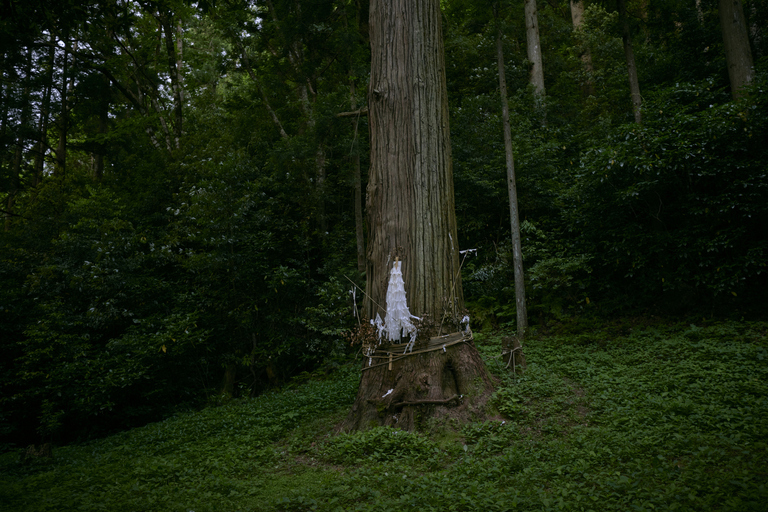
The beautiful Dangyō-no-taki Waterfalls (Okinoshima Town) flow down either side of Dangyō Shrine in the middle of a Japanese cedar forest. The waterfall on the right is called Odaki (male) and the one on the left is known as Medaki (female). Odaki is around 50 meters high and Medaki is around 40 meters. Danygō-no-taki are included among Japan’s Top 100 Waterfalls and the water is considered to have sacred properties.
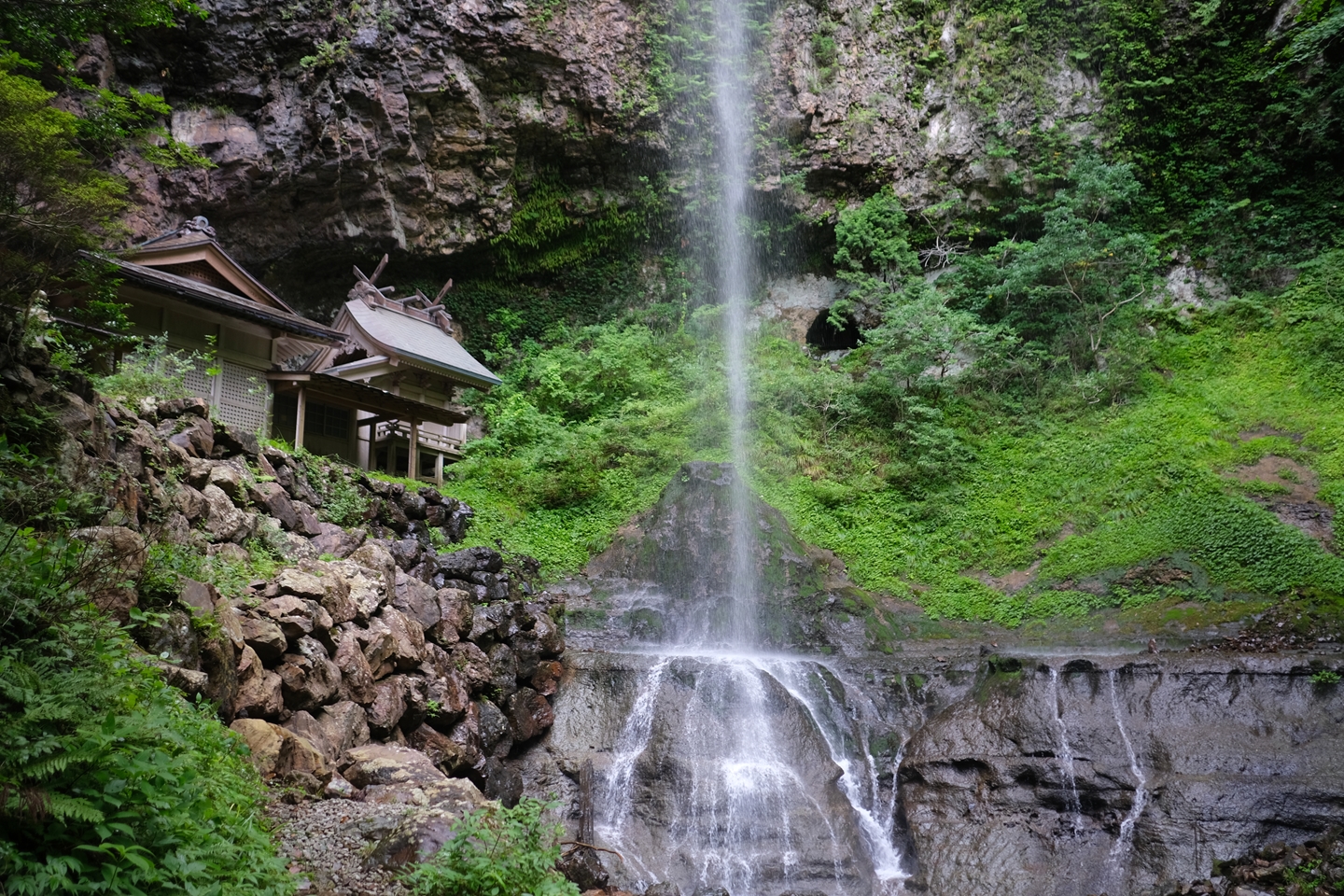
The entrance is marked by a torii and it takes around 10 minutes to walk up the tree-lined path to the waterfalls. There is an interesting local story about the torii and the two large cedar trees standing just in front, as the torii was originally situated in front of the trees. In the past, trees from the former Oki Province were donated for the ceremonial building of Izumo-Taisha Grand Shrine every 60 years or so. However, local residents wanted to preserve some of their trees, and so they came up with the clever idea of moving the torii and rebuilding it behind the two large cedars. As a result, the residents claimed that the trees were not part of the shrine but stood on private land, and they remained untouched over the centuries.
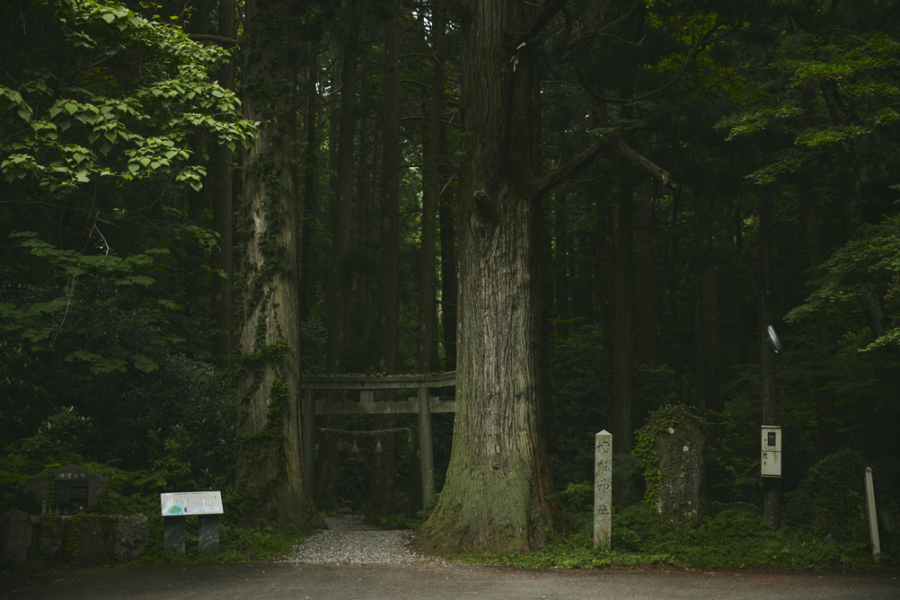
The lively Ja-maki Festival is held every year in the seven districts of Chiburijima Island. Each of the districts create their own huge “Snake God” out of straw. These beasts are dragon-like in appearance, with horns, tongues, ears, fangs and a mane. Once completed, the snake is rolled up, purified with salt and paraded around the district, before being wrapped around a large tree. The snake is thought to represent a water god, and expresses a wish for good health and prosperity for the community.
The Four Myojin Taisha Shrines
Myojin Taisha designates important shrines dedicated to a powerful deity, and four such shrines in the Oki Islands carry this prestigious title. A list of all known shrines throughout Japan was included in the Engishiki, an official compilation of laws and customs from 927. Kyoto was the capital of Japan at this time. Only 224 of the 2861 shrines listed in the Engishiki were designated as Myojin Taisha, and most were located in or quite near to Kyoto. The fact that the remote Oki Province had as many as four Myojin Taisha more than a thousand years ago is evidence of its strong connections with the imperial court.
Not only is Mizuwakasu Shrine (Okinoshima Town) a Myojin Taisha—it also carries the title of Ichinomiya, making it one of the two highest-ranking shrines of the former Oki Province. According to legend, it honors a deity who rose from the sea and came to the area where the shrine now stands. The main building is another example of the unique Oki-zukuri architecture. It is not unusual to find small sumo rings near shrines. Although sumo is known today as a sport, it has close ties with Shinto and began as a ritual performed at shrines as an offering to the gods. The ring at Mizuwakasu Shrine is particularly special, as a big sumo festival is held here approximately every 20 years when the shrine’s roof is rethatched and the deity is reinstalled. A smaller annual tournament is held on November 3, too.
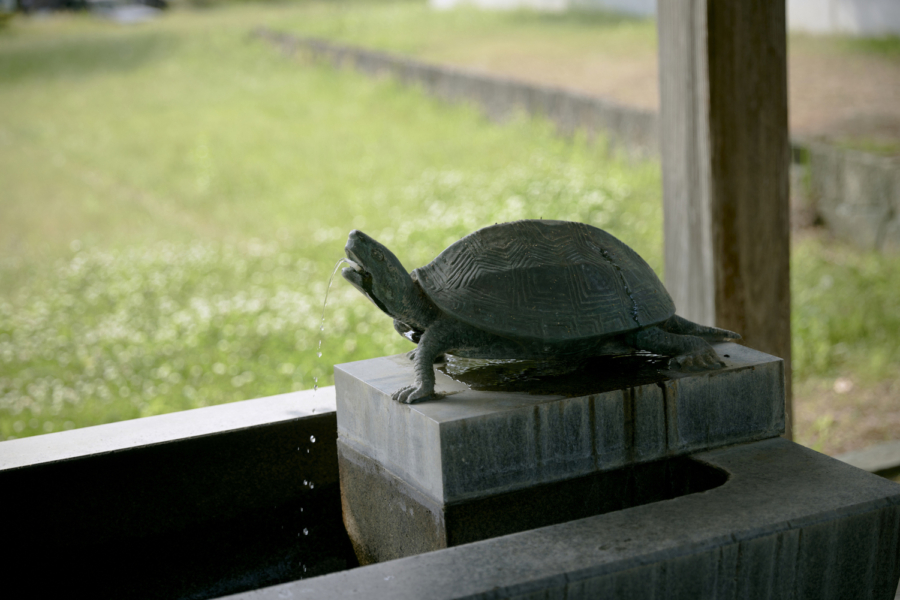
The shrine also hosts the Sairei-furyū FestivalThis will open in a new tab. on May 3 in even-numbered years, with kagura (Shinto dance) and yabusame (archery on horseback) among the attractions. Near the shrine is an attractive Western-style building which houses the Oki Kyōdo-kan Museum, with displays about the folklore of the islands. The building dates back to 1885 and once served as an administrative building and then a post office.
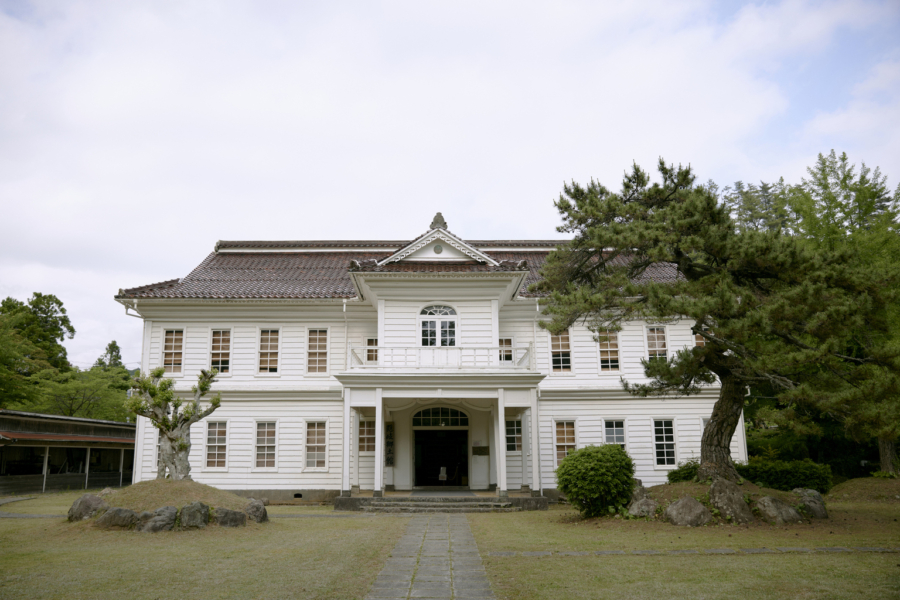
Yurahime Shrine (Nishinoshima Town), the second of the two Ichinomiya shrines, is closely connected to a rather surprising sea creature—the squid. This shrine sits near a shallow inlet called Ika-yose-no-hama (squid gathering bay). In the past, the inlet was teeming with migrating squid during autumn and winter, and local residents would catch the squid with their bare hands. There is an interesting legend about the shrine deity, Yurahime-no-mikoto, and the presence of the squid: The goddess was traveling across Urago Bay to the shrine in a large bucket, paddling with her hands, but became angry when some squid playfully bit her on the hand. To make up for this bad behavior, large numbers of squid swim into the bay and allow themselves to be caught. Although the number of real squid has decreased in recent decades, you can see squid motifs all around the shrine. The shrine’s festival takes place on the last weekend in July of odd-numbered years. The main event is when Yurahime-no-mikoto is symbolically carried in a mikoshi (portable shrine) down to nearby Urago Port and is taken onboard a ship. The mikoshi cruises around Urago Bay for around an hour, before being returned to Yurahime Shrine the next day.
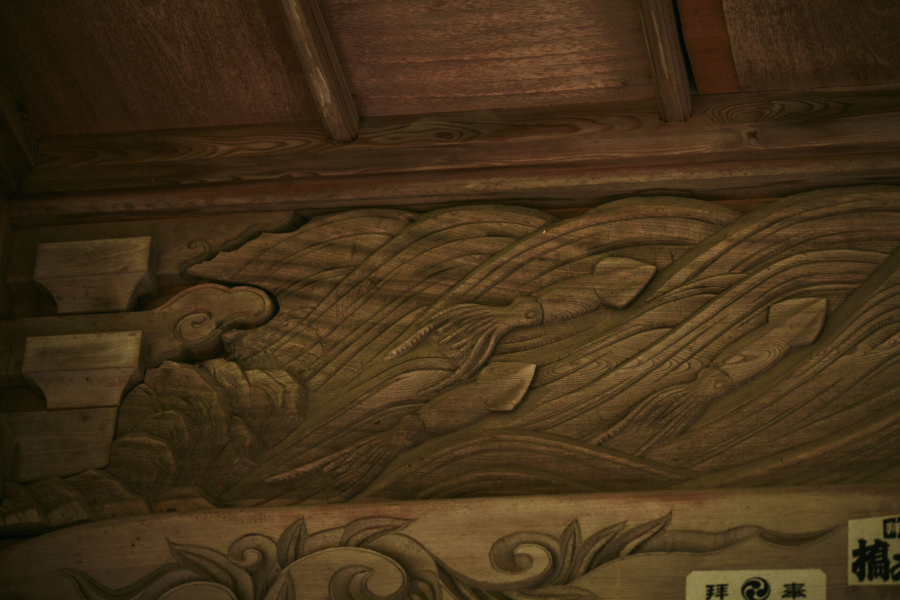
Ise-no-mikoto Shrine (Okinoshima Town) is located in the Kumi region, known for obsidianThis will open in a new tab. —a kind of volcanic glass which was mined there. Obsidian has very sharp edges when broken and was highly prized by prehistoric people for making stone tools. There is evidence that the high-quality obsidian from the Oki Islands was being transported to other parts of Japan from as early as 30,000 years ago. The powerful deity of Ise-no-mikoto Shrine is said to protect the region from outside forces, which is very fitting in view of the valuable obsidian found there. The shrine’s annual festival features kagura performed throughout the night at the hall in the shrine grounds. This festival takes place on July 15 in even-numbered years and July 16 in odd-numbered years.
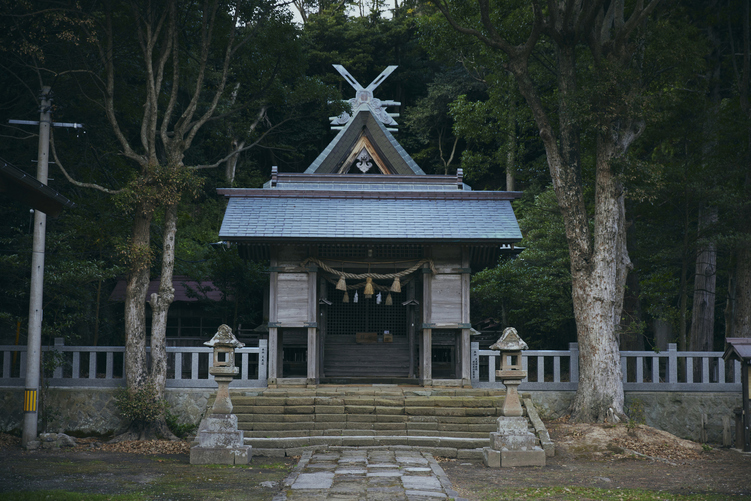
The approach to Uzuka-mikoto Shrine (Ama Town) is unusual because it has two torii, and the rice fields on either side make for an attractive setting, especially in the summer. Uzuka-no-mikoto, the strong-minded deity enshrined here, is said to have fallen in love with a goddess called Hinamachihime-no-mikoto. Uzuka-no-mikoto won a rock-throwing contest against a rival, earning the affections of the goddess. The two went on to marry and had a daughter, Yanai-hime, who is enshrined at the nearby Nagirahime Shrine. It is said that her birth took place along the picturesque Akiya Coast, and the road leading from the coast to Uzuka-mikoto Shrine came to be associated with a happy marriage and healthy children.
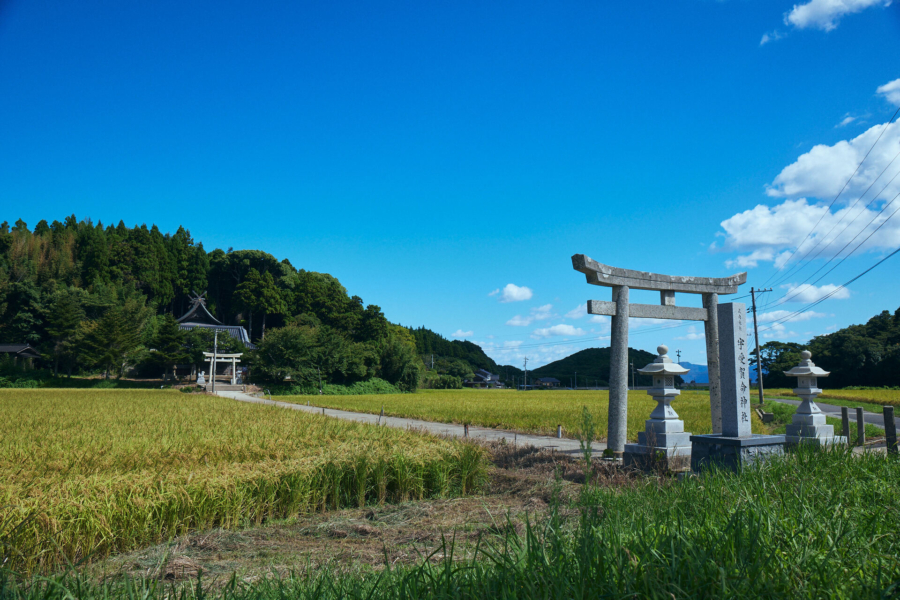
Connections with an Exiled Emperor
Oki Shrine (Ama Town) was built in 1939, making it a relative newcomer, but it honors one of the most revered historical figures of the Oki Islands—Emperor Go-Toba (1180-1239). The shrine was built to commemorate the 700th anniversary of his death, using the Oki-zukuri style of architecture.
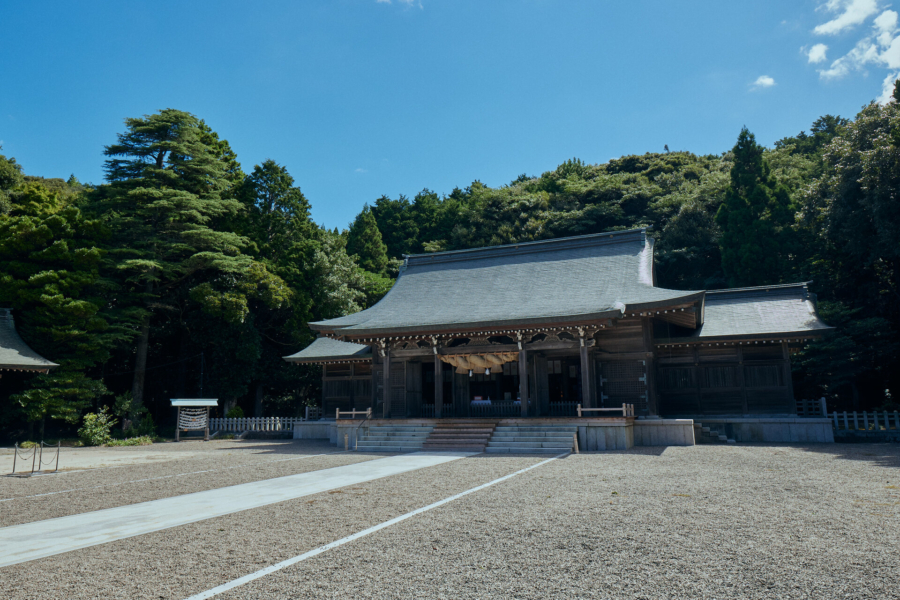
The emperor was exiled to the islands after being defeated by the shogunate during the Jokyu Rebellion in 1221. However, it was no great hardship to come to the Oki Islands, where food and other resources were plentiful, and he lived out the rest of his life comfortably. Emperor Go-Toba was very interested in waka (Japanese poetry) and some of his most famous poems are inscribed on stone slabs displayed in the gardens surrounding the shrine. Learn more about his life and achievements at the nearby Emperor Go-Toba Museum. The Oki Shrine Spring and Autumn FestivalsThis will open in a new tab. are held on April 14 and October 14 every year, featuring performances of traditional dance and waka written by the emperor. For a different view of the shrine, you can make a reservation to visit at night. There are many cherry trees in the grounds of the shrine, making it a popular spot for cherry blossom viewing in the spring.
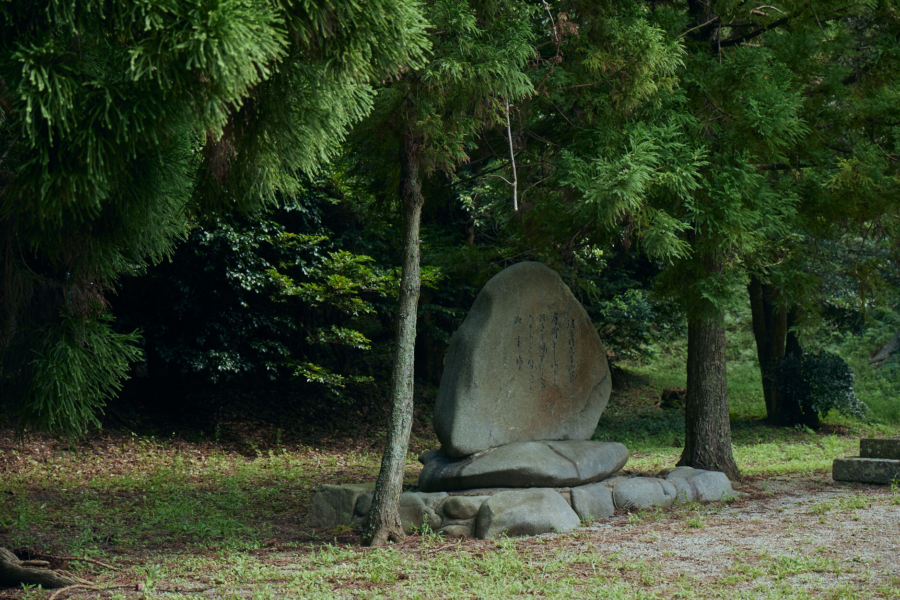
A visit to the mystical Takuhi Shrine (Nishinoshima Town) feels like stepping into another world. Set deep in a tranquil forest, part of the shrine dates back to 1732, making it the oldest existing wooden shrine building in the Oki Islands. The shrine sits partway up Mt. Takuhi, which is the highest mountain among the three Dōzen Islands at 452 meters. It takes about 20 minutes to reach the shrine on foot from the car park. Sitting behind the main shrine building, the shrine’s honden (god’s sanctuary) is built into a cave in the side of the mountain. Only the gods and the priest are permitted to approach and enter this sacred space, but you can still get a good view from a respectful distance.
Takuhi Shrine honors the deity of maritime safety. According to a legend from around a thousand years ago, divine fire rose from the sea and up to mountain, landing in the cave where the honden now sits. The exiled Emperor Go-Toba was later guided by the same divine fire during his journey to the Oki Islands in 1221. Fires tended on the mountain once served as beacons for sailors at sea, and crews setting out on the kitamaebune (merchant ship) route during the Edo Period (1603-1867) would pray for a safe voyage as they passed Mt. Takuhi. The priest’s residence next to the shrine is no longer occupied, but a priest still visits on a regular basis to oversee various rituals. Representatives from each region of the Dōzen Islands come to pay their respects during the Lunar New Year, and the annual shrine festival is held here on July 23 and 24.
